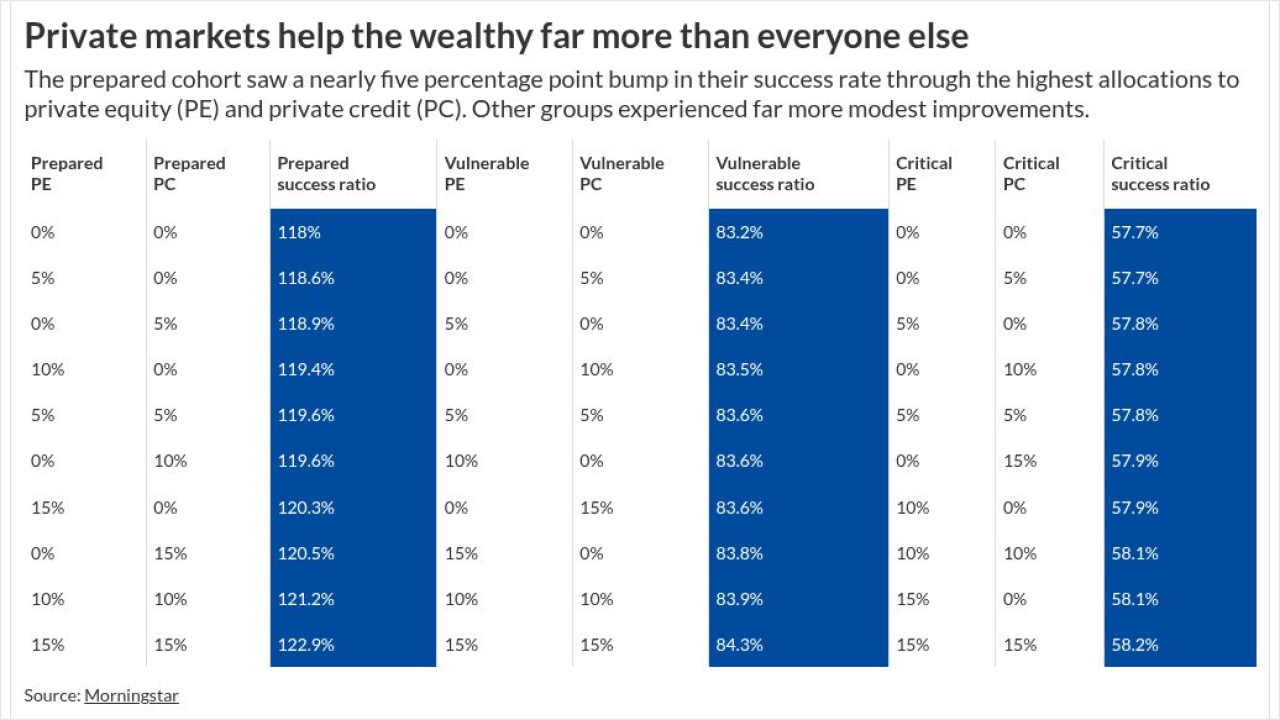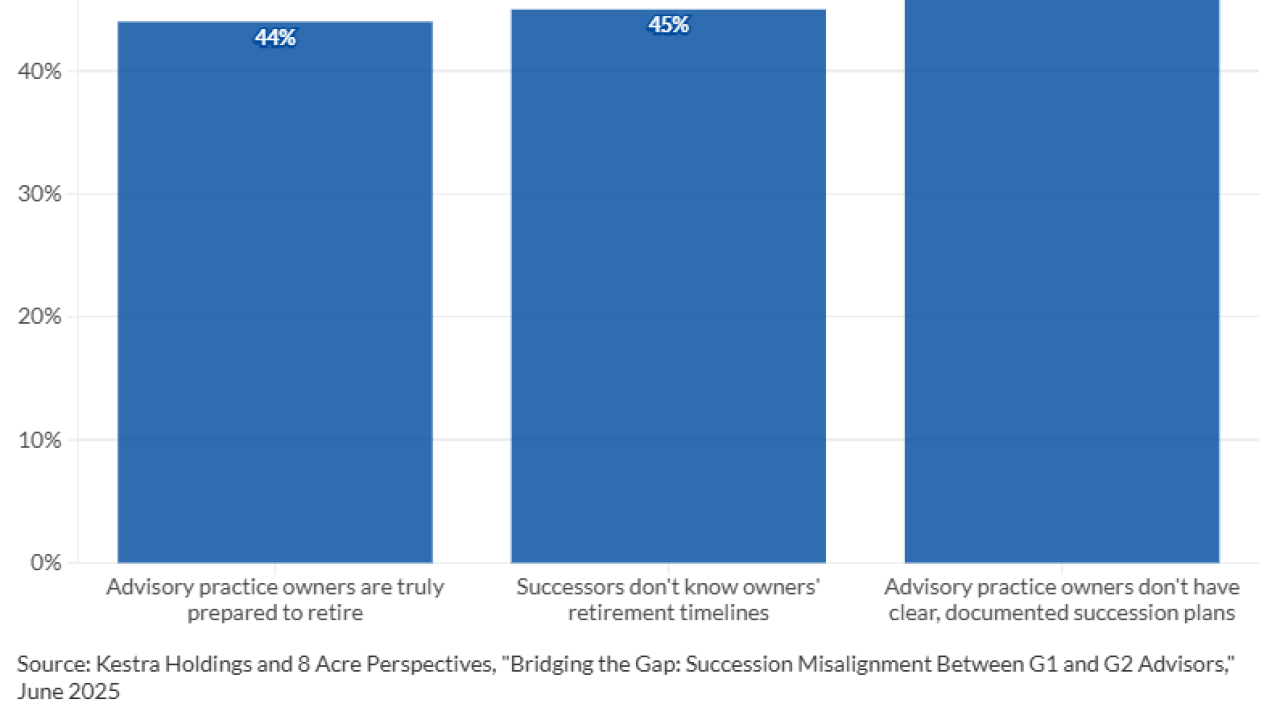NEWPORT BEACH, Calif. – What are M&A deal makers on the hunt for advisory firms really looking for – and what kind of deals are they offering?
Many of the industry’s top M&A executives attended the annual Deals and Deal Makers Summit, and Financial Planning sat down with three of them to get a report from the trenches.
The executives discussed their strategies and business models, the kind of firms they want to buy, deal terms they’re offering, valuations and multiples they’re using, market activity and factors driving firms to sell.
Beacon Pointe Wealth Advisors
The five-year old Newport Beach, Calif.-based aggregator now has six firms in three states after buying TPW Financial in Boston earlier this month, its’ first outside of California and Arizona.
TPW’s $300 million in assets under management pushed Beacon Pointe’s AUM to around $1.45 billion. The firm is half owned by the acquired advisors and half by Beacon Pointe Holdings, which owns 100% of Beacon Pointe Advisors, a powerhouse Orange County RIA with approximately $7.5 billion in assets.
Beacon Pointe aspires to be a national brand with increasing value as a sustainable firm, with no plans to sell or go public, according to President Matt Cooper, who is also president of Beacon Pointe Advisors private client services.
Targets – The aggregator is looking for firms across the country with at least $100 million in AUM who do financial planning and use primarily third party investment managers and mutual funds.
“Above all, we want great people who are accretive beyond just the economics,” Cooper says. “We don’t have all the answers and we appreciate smart thinking.”
Deal terms – Accretion is key to Beacon Pointe’s pitch to target firms – join us and become part of something bigger that will have more value and sell for more. By offering support and scale, “we can help them grow and create a lot of synergies,” Cooper says.
Beacon Pointe usually offers firms all equity deal terms, although larger firms often want cash as well, Cooper says. A value is established for an acquired firms’ capital contribution, which becomes the floor for the sale price.
If the firm is later bought out, Cooper explains, the price is determined by either fair market value or the capital contribution, whichever is higher.
Valuation – Beacon Pointe uses a multiple of free cash flow to value firms.
Market overview - Interest from sellers is about five times what it was last summer, Cooper says. While older advisors looking for a succession plan is a consistent driver of seller activity, this year more advisors are concerned that the bull market may be peaking. “If they’re older, they don’t want to get caught in a trough and wait to recover their losses,” Cooper says.
Boston Private Wealth
The division of Boston Private Bank & Trust Company has around $9 billion in AUM thanks to last year’s acquisition of Peter Raimondi’s Banyan Partners, which had $4.5 billion in assets at the time of the sale.
Boston Private has 13 offices in six states focused on high net-worth and ultra high-net-worth clients.
Targets – Boston Private wants to both expand in markets where it already has a presence and penetrate new markets such as southern California and Washington, D.C., Raimondi says. The firm is looking for advisors who share its vision and strategy for wealth management, he says, and have a compatible culture.
Raimondi says he is also “very interested” in tuck-ins, also known as lift-outs, either solo advisors or small teams from another firm who can easily integrate into Boston Private.
“They tend to be entrepreneurs and highly skilled at bringing in business,” Raimondi says. “I would do tuck-ins all day long if I could.”
Deal Terms – Boston Private offers sellers a combination of cash and equity, usually split evenly. The firm is open to negotiations, however, says Raimondi, and is “fairly flexible.”
Valuation – Boston Private values firms on multiples of EBITDA, Raimondi says. The quality of the firm’s people and its “demonstrated ability to grow assets” are key attributes Raimondi says he evaluates before making an offer.
Although multiples for firms with less than $500 million in assets are usually less than multiples for larger firm (roughly 4 to 6 times cash flow for smaller firms, more for larger ones), Raimondi says he’s willing to pay more than the standard multiple for high quality firms, even if they’re small.
“Why should a really good smaller firm that’s growing have a lower multiple than a big firm that’s crappy?” he asks.
Market Overview –The M&A market is still very active, and Boston Private has become “a lot more discerning” when vetting firms, according to Raimondi. He agrees with Cooper that the market cycle is driving more firms to sell, especially those owned by advisors in their 50s and 60s.
“It’s been a seven-year bull market, and it’s not going to last forever,” he points out. “It’s something advisors considering selling certainly should be thinking about.”
United Capital Financial Advisors
The Newport Beach, Calif.-based aggregator with high-powered private equity backing now has over 50 firms around the country and over $15 billion in AUM.
Although often called a roll-up firm, senior vice president of acquisitions Matt Brinker insists United is a “strategic buyer.” The end game for United Capital is either a sustainable “private structure” like a national accounting firm or a “public auction,” Brinker says.
Targets – United is looking for planning-oriented firms with between $250 million and $1 billion in AUM that have “relationship-driven asset gathering CFPs” in major and sub-major metropolitan markets around the country, Brinker says.
He is particularly interested in firms run by Gen X advisors who are thinking hard about “how wealth management will look over the next five to seven years and how they will compete in the new environment.”
Deal Terms – United offers advisory firms an equal combination of equity, cash and notes payable. Liquidity is available to partners who have been with United for six years, Brinker says.
Valuation – United values firms on multiples of EBITDA, but Brinker says the company generally pays a lower multiple than industry standards because of the “strategic synergies” it can provide firms, such as a digital strategy for clients, operating efficiencies and training and coaching.
Market Overview – Brinker says he is seeing increased interest from younger owners who are concerned about the impact of disruption in the industry from increased digital access, pricing and transparency. “They are looking at the younger demographic they will need to serve and are looking for strategic partners to help them,” he says.
Read more:





